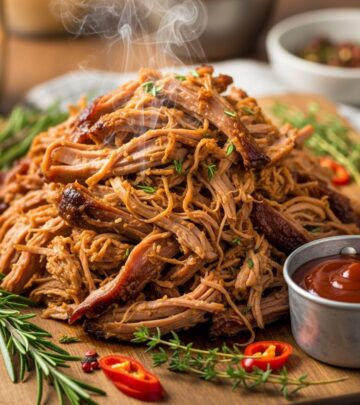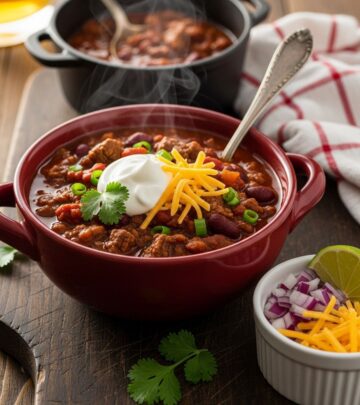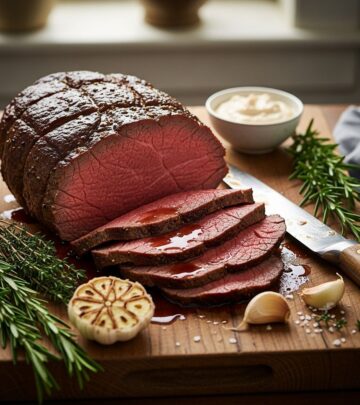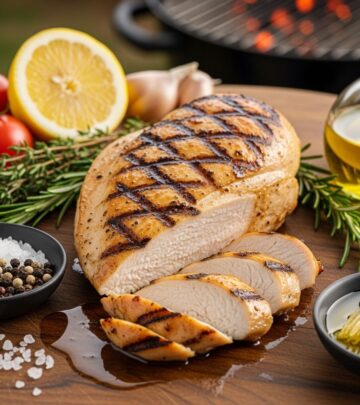How to Take the Temperature of Your Turkey: A Complete Guide
Precision in every probe guarantees a tender, flavorful holiday bird.

Cooking the perfect turkey is the crown jewel of many holiday feasts. But whether you’re a first-timer or a seasoned cook, one crucial step stands between you and turkey triumph: measuring the internal temperature accurately. Doing it right means a juicy, flavorful bird that’s reliably safe to eat—while avoiding the all-too-common pitfalls of undercooked or dried-out meat. This guide will take you step-by-step through the process, from thermometer basics to troubleshooting and expert FAQs.
Why Temperature Matters in Turkey Cooking
Roasting a turkey isn’t just about clock-watching. While guidelines can tell you roughly how long to cook your bird, every turkey is unique—a little plumper here, a little leaner there. Oven temperatures fluctuate. Stuffing, trussing, and opening the oven all play a role. That’s why monitoring your turkey’s internal temperature is the only reliable way to avoid foodborne illness and guarantee mouthwatering meat.
- Food Safety: Turkey, like all poultry, can harbor harmful bacteria unless fully cooked.
- Moisture and Flavor: Overcooked turkey is notoriously dry; undercooked turkey is unsafe. Hitting the right temperature range is key.
- Precision: You can feel confident carving and serving when you check actual internal temperatures.
Choosing the Right Thermometer
Not all thermometers are created equal. Choosing the right tool ensures ease of use and accuracy:
- Instant-Read Thermometers: Offer fast, precise readings. Insert, wait a few seconds, and remove.
- Leave-In Probe Thermometers: Allow continuous monitoring; set an alarm when your target temperature is reached.
- Dial (Analog) Thermometers: Reliable but slower—make sure to calibrate for accuracy.
For best results, invest in a high-quality digital instant-read thermometer. It removes guesswork and speeds up the checking process.
Calibrating and Caring for Your Thermometer
Before the big day, check that your thermometer is accurate. Insert it into a glass of ice water: It should read 32°F (0°C). If it’s off, adjust according to the manufacturer’s instructions. Clean it thoroughly after each use with hot, soapy water to prevent cross-contamination.
Critical Temperatures for Turkey
Your target temperatures depend on both safety standards and texture preferences. According to USDA guidelines:
- 165°F (74°C): Safe minimum for all poultry (including turkey). This kills bacteria such as Salmonella and Campylobacter.
However, the dark meat (thighs and drumsticks) tastes best when cooked a little higher—around 175–180°F (79–82°C)—for tender, juicy results. The breast, being leaner, should not go above 165°F (74°C) or it risks drying out.
Where to Take Your Turkey’s Temperature
Where you insert your thermometer makes a crucial difference:
- Deepest Part of the Breast: This is the thickest, slowest-cooking part and should be at least 165°F (74°C).
- Inner Thigh (Close to the Body): Ideally should reach 175–180°F (79–82°C) for optimum texture.
- Not Touching Bone: Always insert the thermometer into the meat, not next to bone, cartilage, or the cavity, which may give a false reading.
For stuffed turkeys, check the center of the stuffing as well—it must also reach 165°F (74°C) for food safety.
Step-by-Step: Measuring Turkey Temperature
Ready to check your bird? Here’s the step-by-step method for foolproof results:
- Remove Turkey from Oven: Open the oven and carefully pull out the roasting pan onto the rack.
- Insert the Thermometer: Find the thickest part of the breast; go in from the side, aiming for the center. Avoid any bones.
- Read the Temperature: Wait a few seconds for an instant-read thermometer or until the reading stabilizes for other types.
- Check the Thigh: Next, insert into the inner thigh, close to where the leg meets the bird.
- Check the Stuffing: If stuffed, test the stuffing’s core temperature as well.
- Rest the Bird: If the breast is at least 160°F and the thigh over 175°F, your turkey is ready. Carryover heat will bring the temperature up a few more degrees as it rests.
Special Considerations: Stuffed vs. Unstuffed Turkey
Stuffing adds complexity to temperature checking:
- Stuffed birds need extra time: the stuffing’s center must hit 165°F for safety.
- Consider cooking stuffing separately for more even cooking and easier monitoring.
If your stuffing is lagging behind the meat, but the turkey is done, scoop it into a baking dish and return to the oven to finish cooking.
The Importance of Resting Your Turkey
Once your turkey hits all the target temperatures, resist the urge to carve immediately. Instead, tent it loosely with foil and rest it for 20–30 minutes. This allows juices to redistribute, making the meat more succulent and easier to carve.
Common Temperature Mistakes (and How to Avoid Them)
- Not Checking Multiple Spots: Always check at least the breast and thigh to ensure even cooking.
- Touching Bone or Pan: Can give inaccurately high readings; always aim for the center of the meat.
- Forgetting Carryover Cooking: Factor in that the turkey’s temp will rise 5–10°F while it rests after roasting.
- Ignoring Stuffing Temperature: This can be a hidden source of food safety risk if not checked.
Tips for Juicier, Safer Turkey Every Time
- Let Thermometer Stabilize: Wait for the reading to stop changing before recording temperature.
- Check Early and Often: Begin checking 30–45 minutes before you expect the turkey to be done.
- Record Key Readings: Note the temperatures at each spot to ensure all parts are cooked.
- Use a Timer: But don’t rely on it alone—thermal checking is essential.
- Rest Before Carving: Ensures juicier, tender meat.
What If Your Turkey Isn’t Done?
If you check the temperature and it isn’t high enough:
- Return the turkey to the oven.
- Recheck every 15–20 minutes.
- If breast is done but thigh or stuffing isn’t, cover the breast loosely with foil to keep it from drying out.
Summary Table: Turkey Temperature Guide
| Turkey Part | Target Temperature | Notes |
|---|---|---|
| Breast | 165°F (74°C) | Juicy, safe to eat |
| Thigh/Drumstick | 175–180°F (79–82°C) | More tender at higher temp |
| Stuffing | 165°F (74°C) | Essential for safety |
Frequently Asked Questions (FAQs)
Can I use a regular meat thermometer instead of instant-read?
Yes, but instant-read thermometers are much faster and generally more accurate. Classic analog versions work, too—just be patient while waiting for the pointer to stabilize. Avoid old-fashioned pop-up thermometers, which are less reliable.
What should I do if my turkey is done but the stuffing isn’t?
Remove the stuffing and return it to the oven in a separate covered dish until it reaches 165°F (74°C). Tent the turkey with foil and keep it warm while the stuffing finishes baking.
Can I check the temperature without removing the turkey from the oven?
With a leave-in probe thermometer, yes—you can continuously monitor cooking without removing the turkey. For instant-read types, you’ll need to carefully slide the oven rack out, avoiding burns.
What if some parts of the turkey are hotter than others?
That’s normal! The breast usually cooks before the thigh. If the breast is reaching 165°F but the thigh is behind, tent the breast with foil and continue cooking until the thigh registers at least 175°F.
Do I need to rest the turkey before serving?
Yes, resting ensures even moisture distribution and easier carving. Let it rest at least 20–30 minutes, loosely tented with foil.
Why not just trust the pop-up timer?
Pop-up timers often activate far over the optimal breast temperature, leading to overdone, dry turkey. Always check with an independent thermometer for best results.
Conclusion: Temperature is Turkey Success
A flavorful, memorable turkey feast is within reach—no stress, no guesswork. Arm yourself with the right thermometer, know when and where to check, and confirm the right numbers every time. Whether it’s a Thanksgiving centerpiece or a holiday treat, temperature know-how is the secret technique behind every juicy, delicious turkey. Happy roasting!
References
Read full bio of medha deb












